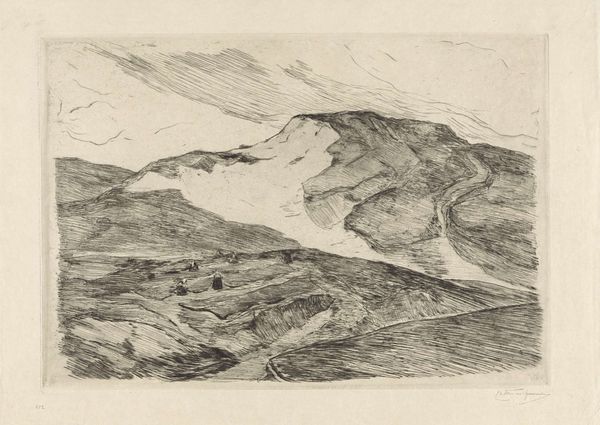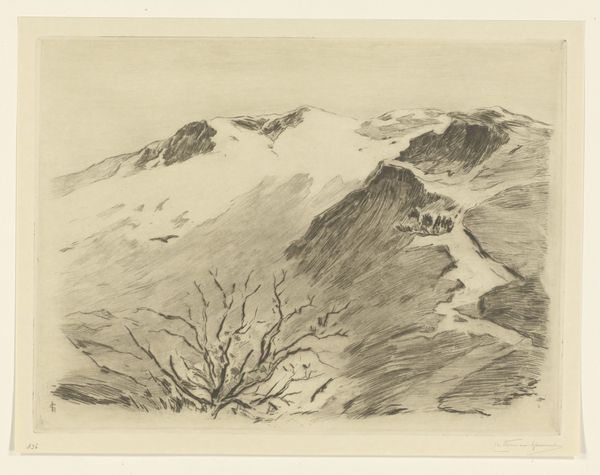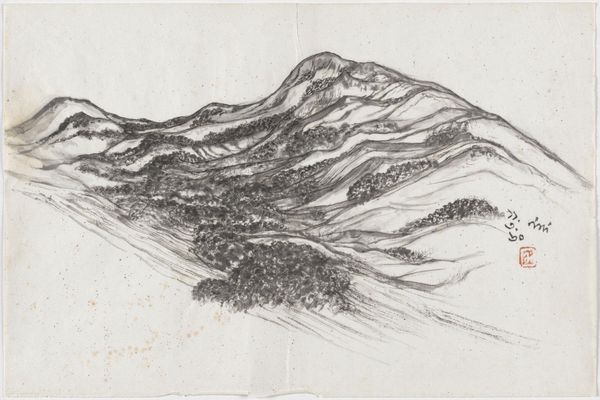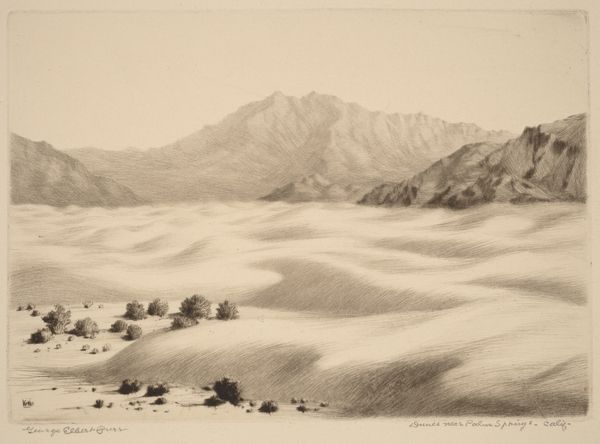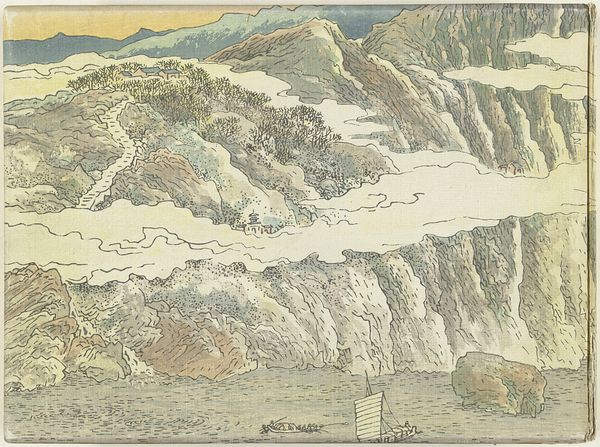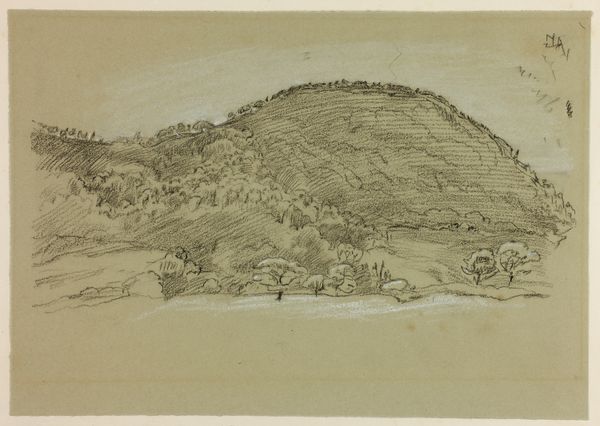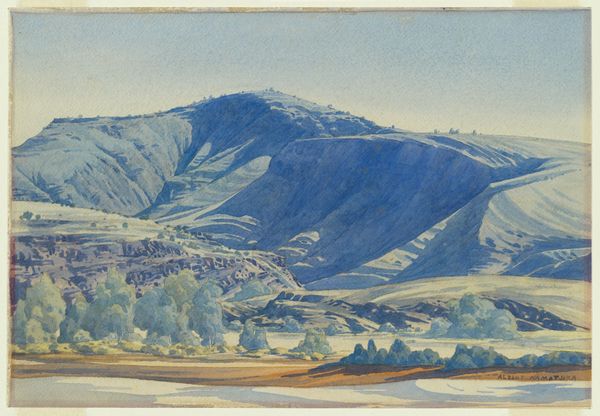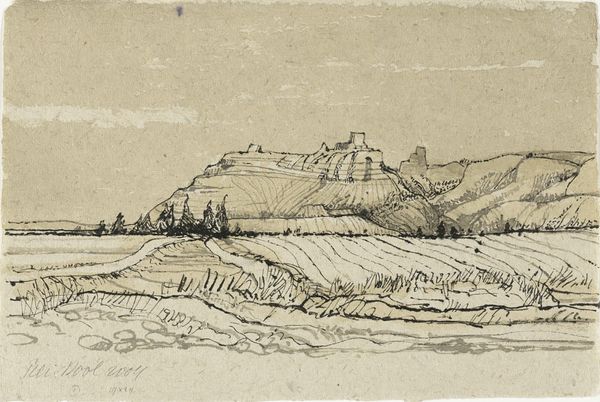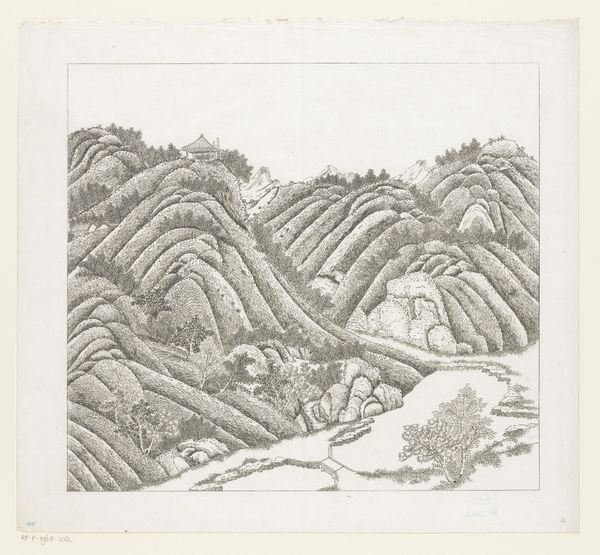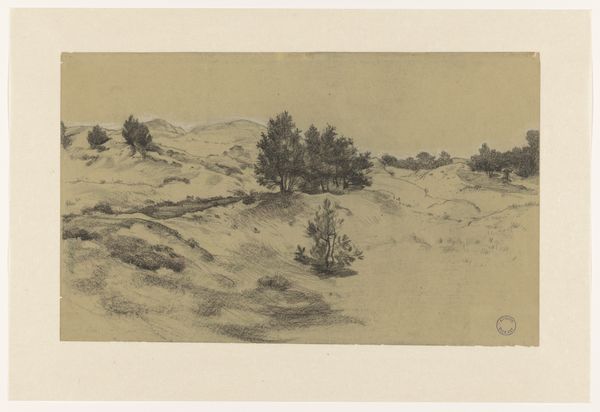
drawing, print, etching, graphite
#
drawing
# print
#
etching
#
landscape
#
graphite
#
modernism
#
realism
Dimensions: plate: 19.7 x 36 cm (7 3/4 x 14 3/16 in.) sheet: 29.1 x 46.3 cm (11 7/16 x 18 1/4 in.)
Copyright: National Gallery of Art: CC0 1.0
Curator: Looking at "Valley of the Savery, Wyoming," etched in 1934 by John Taylor Arms, I'm immediately struck by the austere tranquility it evokes. There's an almost chilling stillness about it. Editor: Chilling, yes, in a way. For me, it speaks of isolation, that wide, seemingly untouched landscape, coupled with what must have been immense struggles for marginalized communities during the Great Depression. Are we really just celebrating an artist's rendition of emptiness? Curator: Perhaps, or perhaps we are recognizing his incredible technique. Notice how Arms uses the etching process to achieve remarkable textural detail? Observe the crispness of the lines, defining the valleys and the rugged mountains in the distance. This isn't mere representation, it's a mastery of form and execution. The formal balance, the use of line... Editor: And who benefitted from this mastery? We need to remember how the myth of the American West—celebrated often by white, male artists—helped justify the erasure of Indigenous presence and the exploitation of the land and its people. Was Arms complicit in this ideology? We should consider that. Curator: Complicity, maybe, or perhaps merely an uncritical reflection of his time? Certainly, the formal qualities are undeniable. The monochromatic palette adds to the sense of drama, almost theatrical. It makes the viewer’s eye dance, across a subtle symphony of shadow and light, creating a cohesive viewing experience. Editor: A drama built on shaky foundations, literally. It seems relevant to note how the Savery area of Wyoming witnessed severe environmental changes following aggressive land developments, affecting agriculture and native communities for generations. What did this landscape truly represent during this turbulent era? And what does celebrating it without context implicitly endorse? Curator: Such contextual readings are valuable of course. But it's equally important to appreciate the composition as a self-contained statement about technique, a marvel in creating spatial depth. I’m also compelled by his use of detail, each blade of grass carefully represented, with that texture. Editor: Fair enough, but by focusing solely on technique, are we blinding ourselves to the political undercurrents? Works such as these weren’t created in a vacuum; these aesthetic choices had socio-political resonances, influencing societal understanding. Curator: Perhaps so. Arms offers us technical brilliance, yes. Yet a critical approach underscores how landscape art both reflects and shapes how a society views and interacts with its surrounding environment. Editor: Indeed. And understanding both of these realities allows us a far more comprehensive, and necessary, engagement with works like "Valley of the Savery."
Comments
No comments
Be the first to comment and join the conversation on the ultimate creative platform.
